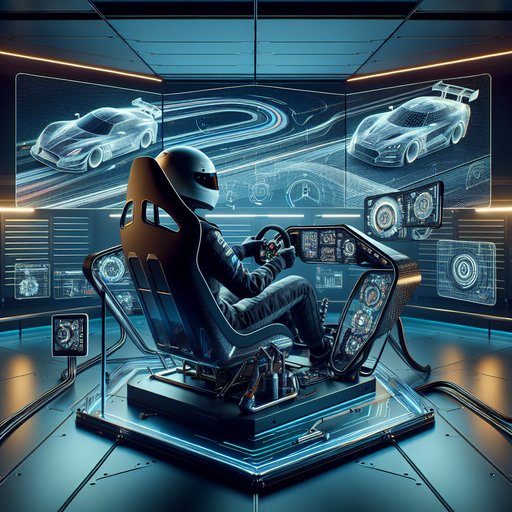
Formula 1’s relationship with simulation has evolved from spreadsheet lap-time models and shaker rigs into immersive driver‑in‑the‑loop laboratories that reproduce circuits with striking fidelity. With in‑season testing heavily restricted since the late 2000s and power‑unit, aerodynamics, and tyre behavior growing ever more complex, teams turned to simulators to bridge the gap between design intent and track reality. The result is a quiet revolution: drivers learn circuits and procedures without burning a liter of fuel, while engineers iterate setups, aeromaps, and energy deployment strategies days or months before a car turns a wheel. This synergy between human perception and high‑performance computation has reshaped how winning pace is found in modern Grand Prix racing.
Simulators matter in F1 because they compress development cycles and de‑risk decisions in a world where track time is scarce and costly. The escalation of hybrid systems, tightly coupled aerodynamics, and tyres that operate within narrow windows means small set‑up errors have big consequences. By allowing drivers and engineers to test hypotheses repeatedly, simulators shorten the distance between concept and execution. They also standardize learning, turning subjective feedback into measurable deltas that correlate with telemetry and lap time.
The early steps were modest: lap‑time prediction codes, kinematics tools, and seven‑post rigs that replayed measured bumps to study ride and damping. Real “driver‑in‑the‑loop” platforms began to appear in the 2000s, marrying real‑time vehicle models to steering, pedal, and visual interfaces. When in‑season testing was curtailed from 2009 onward, the competitive incentive to invest exploded. What began as an adjunct to the wind tunnel became a core pillar of both driver preparation and car development.
Modern F1 simulators combine fast physics with carefully engineered perception. A low‑latency vehicle model runs in real time, fed by detailed tyre characteristics and suspension geometry, while a motion platform cues the driver’s vestibular system within the platform’s limited travel. Laser‑scanned track surfaces provide millimeter‑scale detail of kerbs, cambers, and surface joins, rendered in high‑refresh visual environments widely supplied in the industry. Suppliers have advanced motion cueing algorithms—from classical washout filters to model‑based approaches—to preserve the illusion of sustained accelerations, and the best systems achieve response times tight enough that drivers trust them to call fine setup changes.
Crucially, simulators sit inside a broader “X‑in‑the‑loop” ecosystem. Teams prototype control logic in software‑in‑the‑loop, validate it with hardware‑in‑the‑loop on the standard FIA‑mandated ECU, and then expose it to a driver in the loop to judge drivability. Brake‑by‑wire response, energy recovery and deployment maps, torque shaping, and differential preloads can all be trialed before a car leaves the garage. Because the ECU and power‑unit models are exercised against realistic driver inputs, engineers discover edge cases and refine calibration with far fewer surprises on Friday practice.
On the human side, simulators have transformed training from seat time into scenario time. Drivers rehearse new circuits—learning sight lines, kerb usage, and wind‑sensitive corners—weeks before arrival, and they practice clutch bite points, Safety Car restarts, pit entry lines, and steering‑wheel menu procedures until they are muscle memory. Dedicated simulator drivers support race weekends, turning overnight laps to test setup directions derived from Friday telemetry while race drivers rest; outfits such as Red Bull, Mercedes, Ferrari, and McLaren have all leaned on experienced hands in this role. The result is a tighter feedback loop between track and factory that improves Saturday confidence and Sunday execution.
For car development, the driver‑in‑the‑loop lab has become the meeting point of aerodynamic maps, suspension design, and tyre behavior. Engineers correlate the simulator’s responses with wind‑tunnel and CFD outputs, iterating heave and roll stiffness, anti‑dive and anti‑squat geometries, and ride‑height strategies that are particularly sensitive on ground‑effect cars. The move to new technical regulations in 2022 highlighted this capability, with top teams investing in upgraded platforms and models to understand porpoising, bouncing thresholds, and the trade between aero load and mechanical compliance. Ferrari, for example, publicly unveiled a new simulator at Maranello in 2021 to help prepare for those rules, emblematic of the sport‑wide arms race in fidelity.
Accuracy depends on correlation, and F1 teams treat that as a continuous process, not a one‑off tick box. Track data—pressures, temperatures, damper histograms, GPS traces—feed back into tyre and vehicle models, closing the loop after every session. When the simulator predicts a setup change will shift balance by a fixed amount at a given corner, and the car behaves accordingly on track, confidence compounds; when it does not, engineers adjust parameters and cueing until it does. Visuals, motion, sound, and force‑feedback characteristics are tuned with driver‑specific preferences, minimizing latency and distractions so that the driver’s comments reflect the car, not the simulator.
The competitive impact is broad. Simulators allow teams to onboard rookies with fewer costly mistakes, to trial development parts virtually before fabricating them, and to standardize procedures across crews under cost‑cap constraints. They also enable parallel operations: while a race team executes at the circuit, the factory can run “shadow” programs that explore setup branches too risky to try on Friday. Lessons have flowed across disciplines as well, with manufacturers leveraging F1‑grade driver‑in‑the‑loop methods in endurance racing and road‑car development, and vice versa with specialist simulator suppliers bringing innovations back into Grand Prix programs.
This evolution has not made the real circuit obsolete; it has made it more productive. By arriving at events with pre‑correlated setups, refined controls, and drivers who already “know” the track, teams use limited practice minutes to validate and fine‑tune rather than explore blindly. The trajectory is still upward—lower‑friction motion systems, faster real‑time solvers, richer tyre and weather models, and ever‑closer ECU integration continue to narrow the gap between virtual and real. In a sport defined by marginal gains, the simulator has become a living lab where those margins are discovered, rehearsed, and then cashed in under the lights on Sunday.























































